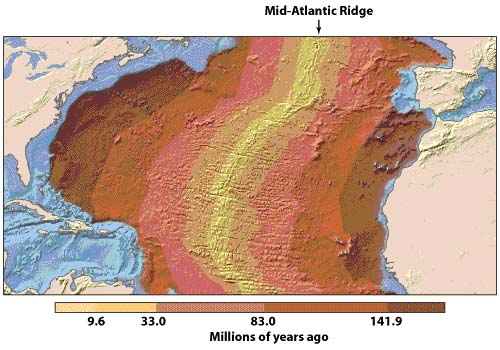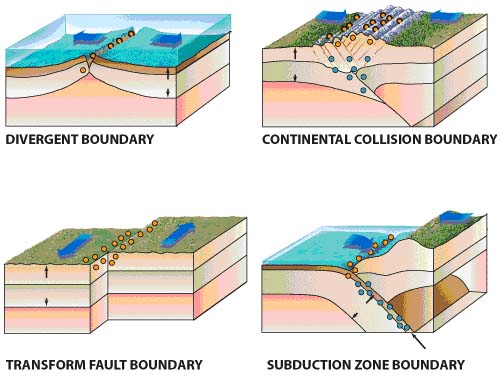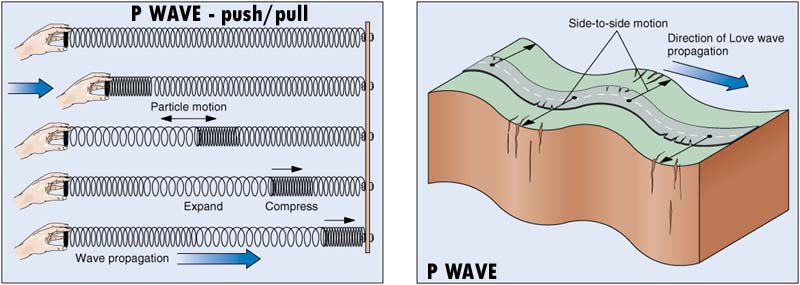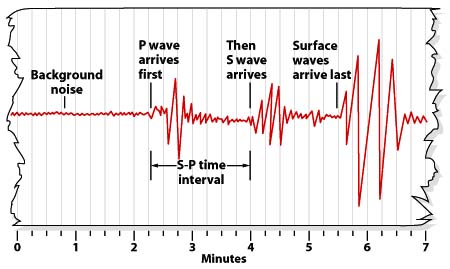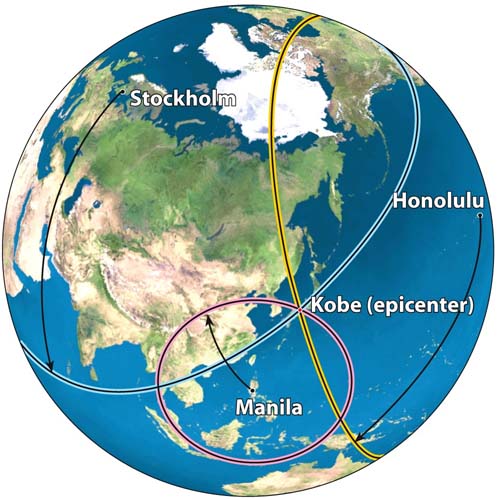Plate Tectonics Quiz
Email this assignment to Peter Matt|
1. The idea proposed
by Alfred Wegener to explain the continental shapes and positions is
known as _____. |
|
|
2. In the diagram below, which two continents did Weger believe to have a perfect "fit"?
A)
North America - South America |
|
|
3.
According to Wegener's model, what evidence did glaciers leave for
the existence of Pangaea? |
|
|
4. What was the
name of the floral fossils Wegener used for the idea of continental
drift? |
|
|
5. In the figure below, what is the age of the sea floor off of the Bahamas?
A)
younger than 9.6 million years |
|
|
6.
Which of the following terms best describes the rocky outer layer of
the Earth?
A) asthenosphere B) biosphere C) atmosphere D) lithosphere E) hydrosphere |
|
|
7. According to the figure below, the island of Molokai was probably over the hot spot approximately how many million years ago?
A)
0.8 |
|
|
8. According to the figure below, which of the following types of plate boundaries produce the deepest earthquakes?
A)
transform fault boundary |
|
|
9. According to the figure below, which of the following types of plate boundaries produce the shallowest earthquakes?
A)
transform fault boundary |
|
| 10.
What term best describes to driving force behind plate tectonics? A) expansion B) convergence C) convection D) divergence E) transformation |
|
|
11.
The phenomenon of the Earth's magnetic pole being in different locations
in the past is known as _______.
A) convection B) sea floor spreading C) normal polarity D) reverse polarity E) apparent polar wandering |
|
| 12.
The scientific study of earthquakes and seismic waves is known as _______.
A) seismograph B) seismogram C) seismology D) vulcanology E) tectonics |
|
|
13. According to the figure below, which type of waves would cause more damage?
A)
P |
|
|
14.
_______ are the first waves to leave the focus after an earthquake.
A) P-waves B) S-waves C) surface waves D) body waves E) shear waves |
|
|
15. In the figure below, what is the approximate time of the arrival of the P-waves?
A)
1 minute |
|
|
16. In the figure below, what is the approximate time of the arrival of the surface waves?
A)
1 minute |
|
|
Fill
In The Blank
|
|
|
17. According to the figure below, _______ is the location of the earthquake.
|
|
| 18. The reptilian fossils that Wegener used to help prove his ideas about plates are known as _______. | |
| 19. The exact point where an earthquake occurs below the surface is the _______. | |
|
True/False
Questions
|
|
|
20. Pangaea is the name of the supercontinent proposed by Harry Hess. True/False |
|
|
21. The Hawaiian Islands are a result of the Pacific Plate passing over a hot spot. True/False |
|
|
22. Rocks closer to the spreading centers in the oceans are older than the rocks farther away from the spreading center. True/False |
|
|
23. Global positioning systems (GPS) are a reliable way to measure plate movements. True/False |
|
|
24. The rate at which plates move apart is approximately 1 to 10 cm/year. True/False |
Brooklyn College - Geology Department

